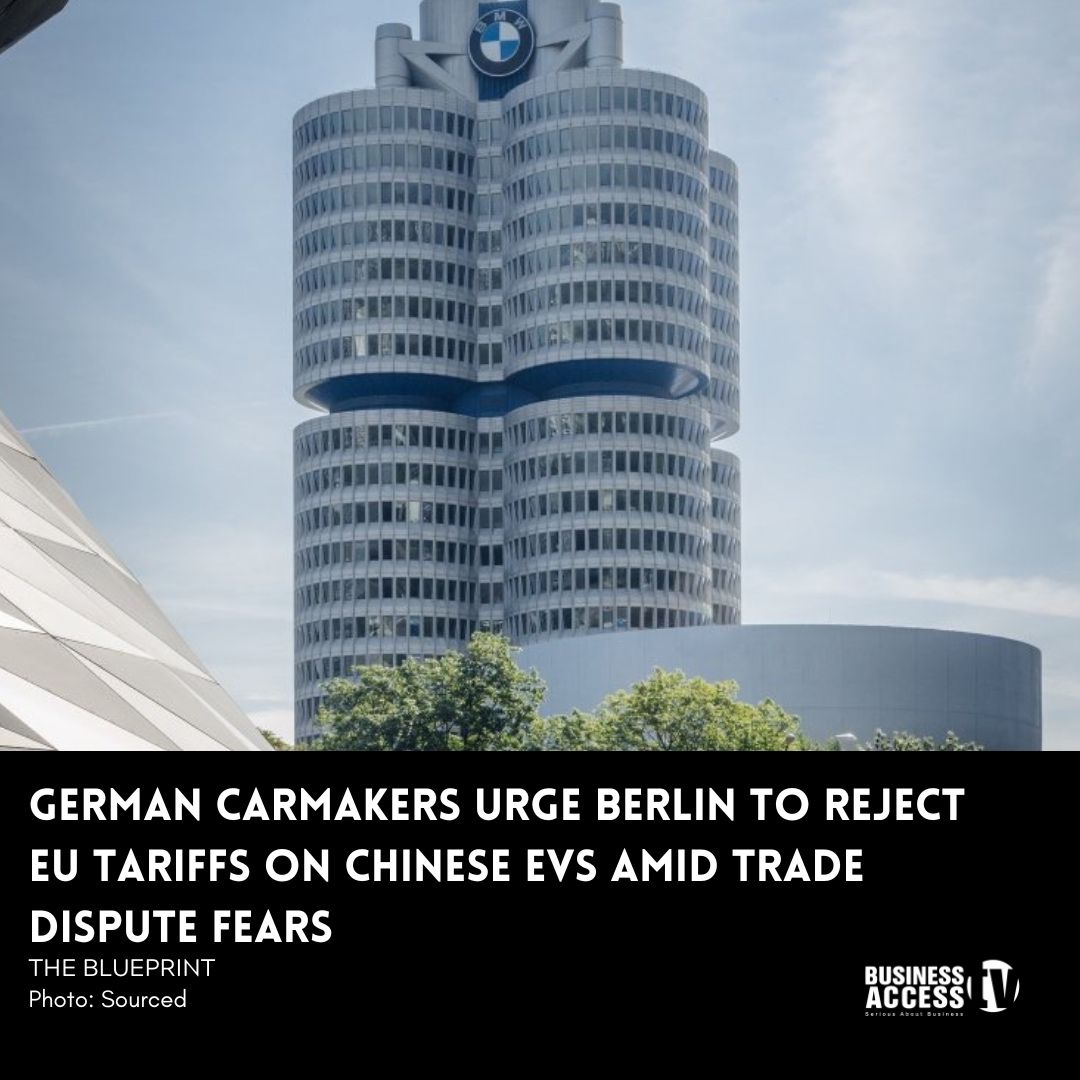The China Market Conundrum: Analyzing Challenges For Automakers Like BMW And Porsche

Table of Contents
Intensifying Domestic Competition
The rise of powerful domestic Chinese auto brands presents a significant threat to established international players like BMW and Porsche. This intensified competition is reshaping the China market conundrum, forcing luxury brands to re-evaluate their strategies.
Rise of Chinese Auto Brands
Chinese manufacturers are investing heavily in research and development, leading to the creation of technologically advanced and competitively priced vehicles. This surge is fueled by:
- Increased R&D investment by Chinese manufacturers: Significant government funding and private investment are driving innovation in areas like electric vehicles (EVs), autonomous driving, and connected car technologies.
- Focus on electric and hybrid vehicles: Chinese brands are aggressively pursuing the EV market, often outpacing international competitors in terms of both technology and market penetration.
- Government support for domestic brands: Subsidies, tax breaks, and preferential treatment are bolstering the growth of Chinese automakers.
- Strong brand loyalty among Chinese consumers: A growing sense of national pride is fostering increased consumer preference for domestic brands.
Price Wars and Market Share Erosion
The aggressive pricing strategies of Chinese brands are triggering price wars, impacting the profitability of international luxury automakers. This leads to:
- Need for strategic pricing adjustments: Luxury brands are forced to re-evaluate their pricing models to remain competitive, potentially impacting their brand image.
- Impact on profitability: Lower prices inevitably squeeze profit margins, forcing companies to find efficiencies elsewhere in their operations.
- Challenges in maintaining premium brand positioning: Price wars can dilute the perception of exclusivity and luxury associated with international brands.
Shifting Consumer Preferences
The China market conundrum is further complicated by rapidly evolving consumer preferences. Understanding these shifts is critical for navigating the challenges.
Demand for Electric and Hybrid Vehicles
The Chinese government's ambitious electrification targets, coupled with growing environmental awareness, are driving a massive shift towards electric and hybrid vehicles. This necessitates:
- Need for substantial investment in EV infrastructure and technology: Luxury brands must invest heavily in battery technology, charging infrastructure, and related services to compete effectively.
- Competition from Chinese EV startups: Many nimble Chinese startups are quickly gaining traction in the EV market, posing significant competition.
- Balancing traditional ICE models with EV offerings: Automakers must find a delicate balance between continuing to offer traditional internal combustion engine (ICE) vehicles while successfully transitioning to EVs.
Focus on Technology and Connectivity
Chinese consumers are technologically savvy and expect cutting-edge features. This requires luxury brands to:
- Importance of digitalization strategies: Developing robust digital ecosystems, including connected car services and mobile apps, is critical for consumer engagement.
- Integration of advanced driver-assistance systems (ADAS): Features like autonomous driving capabilities and advanced safety features are highly valued by Chinese consumers.
- Development of tailored digital ecosystems: Creating personalized user experiences and offering seamless connectivity are essential for maintaining a competitive edge.
Navigating Regulatory Hurdles
The complex regulatory landscape presents further obstacles within the China market conundrum.
Stringent Emission Standards
China's stringent emission regulations require significant investments in cleaner technologies and compliance measures, leading to:
- Cost implications of meeting stricter emission targets: Meeting increasingly stringent standards necessitates considerable investment in R&D and new technologies.
- Challenges in adapting global models to Chinese standards: Automakers must adapt their global product offerings to meet specific Chinese regulations.
- Impact on supply chain management: Compliance requires a robust and responsive supply chain capable of sourcing the necessary components.
Bureaucracy and Import Tariffs
Navigating Chinese bureaucracy and import tariffs poses significant operational challenges:
- Time-consuming approval processes: Securing approvals for new models and technologies can be a lengthy and complex process.
- High import duties impacting profitability: High import tariffs significantly increase the cost of importing vehicles and components, affecting profitability.
- Strategic partnerships to mitigate risks: Collaborating with local partners can help navigate bureaucratic hurdles and reduce risks associated with operating in the Chinese market.
Maintaining Brand Identity and Luxury Positioning
Preserving brand image and luxury positioning within this competitive landscape is paramount.
Adapting Marketing Strategies
Luxury brands must adapt their marketing strategies to resonate with the unique preferences of Chinese consumers. This requires:
- Understanding cultural nuances: Marketing campaigns must be tailored to reflect the local culture and values.
- Leveraging social media and digital marketing: Effective digital marketing strategies are crucial for reaching the tech-savvy Chinese consumer.
- Building brand authenticity and trust: Establishing a strong reputation for quality and reliability is essential for building trust among Chinese consumers.
Balancing Global and Local Strategies
Maintaining a global brand identity while catering to the specific tastes and preferences of the Chinese market requires careful consideration:
- Localized product offerings: Adapting products to meet the specific needs and preferences of Chinese consumers.
- Tailored customer service: Providing high-quality customer service that is sensitive to local cultural norms.
- Investment in local talent and expertise: Hiring local talent and building strategic partnerships to gain valuable insights into the local market.
Conclusion
The China Market Conundrum presents significant, multifaceted challenges for established automakers like BMW and Porsche. Successfully navigating this complex landscape requires a holistic strategy that addresses intense domestic competition, evolving consumer preferences, regulatory hurdles, and the crucial need to maintain brand prestige. By carefully adapting their products, marketing strategies, and operational models, luxury automakers can increase their chances of thriving in this dynamic and lucrative, yet demanding, market. Ignoring the China Market Conundrum is not an option for those seeking long-term success in the global automotive industry. Understanding and effectively addressing these challenges is paramount for continued growth and profitability in the ever-evolving Chinese automotive landscape.

Featured Posts
-
 R45 000 Discount On Kawasaki Ninja Find Your Deal
May 30, 2025
R45 000 Discount On Kawasaki Ninja Find Your Deal
May 30, 2025 -
 Elon Musk And Amber Heard Twins And A Years Long Embryo Dispute
May 30, 2025
Elon Musk And Amber Heard Twins And A Years Long Embryo Dispute
May 30, 2025 -
 Kenin Out Pegula And Alexandrova To Battle For Charleston Open Title
May 30, 2025
Kenin Out Pegula And Alexandrova To Battle For Charleston Open Title
May 30, 2025 -
 Trump Tariffs And The Indian Solar Industry Southeast Asia Market Implications
May 30, 2025
Trump Tariffs And The Indian Solar Industry Southeast Asia Market Implications
May 30, 2025 -
 Uerduen Den Gazze Deki Kanser Hastasi Cocuklara Umut Isigi
May 30, 2025
Uerduen Den Gazze Deki Kanser Hastasi Cocuklara Umut Isigi
May 30, 2025
Latest Posts
-
 Nyt Mini Crossword Answers For March 31 2025
May 31, 2025
Nyt Mini Crossword Answers For March 31 2025
May 31, 2025 -
 Solve The Nyt Mini Crossword Tuesday March 18 Clues And Answers
May 31, 2025
Solve The Nyt Mini Crossword Tuesday March 18 Clues And Answers
May 31, 2025 -
 Nyt Mini Crossword Solutions March 31 2025
May 31, 2025
Nyt Mini Crossword Solutions March 31 2025
May 31, 2025 -
 Tuesday March 18 Nyt Mini Crossword Clues And Answers
May 31, 2025
Tuesday March 18 Nyt Mini Crossword Clues And Answers
May 31, 2025 -
 April 10th Nyt Mini Crossword Clues And Complete Answers
May 31, 2025
April 10th Nyt Mini Crossword Clues And Complete Answers
May 31, 2025
